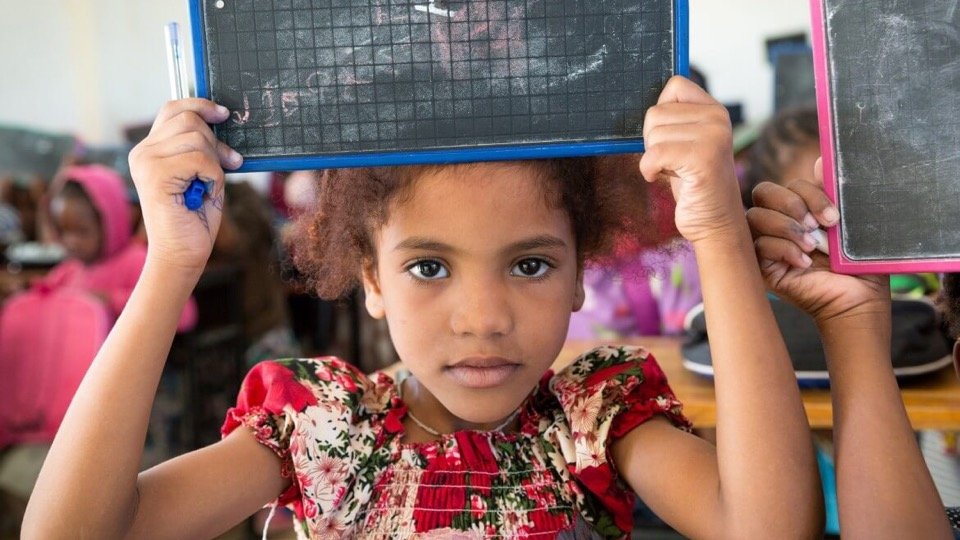Teaching African girls to thrive, not just survive
October 11 is the International Day of the Girl
In Africa, girls are too often left behind when it comes to obtaining the skills they need to be able to get good jobs. Two solutions show promise: competency-based curriculum and gender-responsive training.

In Africa, girls are too often left behind when it comes to obtaining the skills they need to be able to get good jobs. Two solutions show promise: competency-based curriculum and gender-responsive training
This is the 11th blog post published in 2018 as part of the collaborative effort launched in 2017 between the Association for the Development of Education in Africa (ADEA) and the Global Partnership for Education (GPE).
On December 19, 2011, United Nations General Assembly adopted Resolution 66/170 to declare October 11 as the International Day of the Girl Child, to recognize girls’ rights and the unique challenges girls face around the world. Under this year’s theme, “With Her: A Skilled GirlForce”, International Day of the Girl will mark the beginning of a year-long effort to bring together partners and stakeholders to advocate for, and draw attention and investments to, the most pressing needs and opportunities for girls to attain skills for employability.
Why do the lack of relevant skills continue affecting women and girls?
From a tender age, girls are exposed to societal traditional practices, patterns and environments that shape their understanding of what they need to do to be successful human beings. Very often they grow to appreciate informal education more than the formal one. Girls are taught how to survive instead of how to thrive. It is even worse when these teachings are coupled by gender discrimination and negative influences.
African women and girls are particularly disadvantaged when it comes to employment and entrepreneurship opportunities as a result of the lack of relevant training and skills. This has a direct impact on their standards of living, making them vulnerable to negative aspects such as gender-based violence and early marriage. The situation is even more difficult for girls in conflict and post-conflict situations. Indeed, this is evidenced by the huge incidences of school-dropout rates in conflict and post-conflict states in Africa.
Data from the United Nations show that of the 1 billion young people – including 600 million adolescent girls – that will enter the workforce in the next decade, more than 90% of those living in developing countries will work in the informal sector, where low or no pay, abuse and exploitation are common.
In addition, a World Economic Forum 2017 report on Africa’s workforce highlights that every year for the next three decades, 15-20 million increasingly well-educated young people are expected to join the workforce. What is worrying is that employers across the region identify skills gaps as a major constraint to their ability to compete in the global economy.
Two effective solutions: competency-based curriculum and gender-responsive training
Africa’s education and training systems need to fully shed off the encumbrance of their colonial legacy and embrace an education that will enable them to ‘create’ a new African citizen who will be an effective change agent for the sustainable development of the continent.
To accelerate this, African governments need to deconstruct the kind of curriculum that is being applied in schools. We need to shift from theory-based to competency-based curriculum. The current nature of the curriculum and structuring of subject choices frequently lead to the streaming of girls to non-scientific areas of study.
Few educational programs on the continent have demonstrated the flexibility needed to accommodate the multiple roles of women and girls. Gender-stereotyping in educational materials including the misrepresentation and under-valuing of the roles of women and girls serves as a disincentive, thus lowering the aspiration of girls because of the socio-political and economic roles of women.
Another approach to enhancing girls’ and young women’s employability skills is through gender responsive technical and vocational education and training (TVET). This approach is widely recognized across the African continent as a strategic avenue for poverty reduction and development, particularly as a result of its orientation towards the world of work and/or the acquisition of employable skills.
FAWE’s nine years’ experience in rolling out TVET in conflict-prone countries such as Somalia, Liberia, Burundi and Sierra Leone has helped demonstrate that equipping women and girls with skills hitherto dominated by men increases their chances of employment or self-employment, with better economic value and higher returns.
FAWE’s call to action
However, a lot of work remains to be done to quell stereotyped perceptions on girls’ education and especially their enrollment in the science disciplines. Girls need to muster the confidence and self-esteem to navigate through careers in science and technology.
FAWE has strongly advocated for the participation of girls in diagnosing, analyzing and working out solutions to their societal problems as a critical step in devising relevant and effective interventions. Governments, with the support of civil society organizations and the private sector, need to design both national and community programs that empower girls to improve on their analytical skills, how they express themselves and their negotiating skills, to help them nurture their priorities and enter into meaningful dialogue with a variety of actors.
Furthermore, it has become necessary to initiate serious studies into the oral tradition to seek alternative, more credible depictions of the many positive roles that women play, including the profiling of positive role models. These positive representations should then be documented and used for inspirational reading and as background learning and teaching materials.
In conclusion, establishing an early linkage for the girls between training institutions and industry players such as private enterprises will go a long way in preparing them for absorption into the labor market and sharpen their budding entrepreneurial and innovative aspirations.
